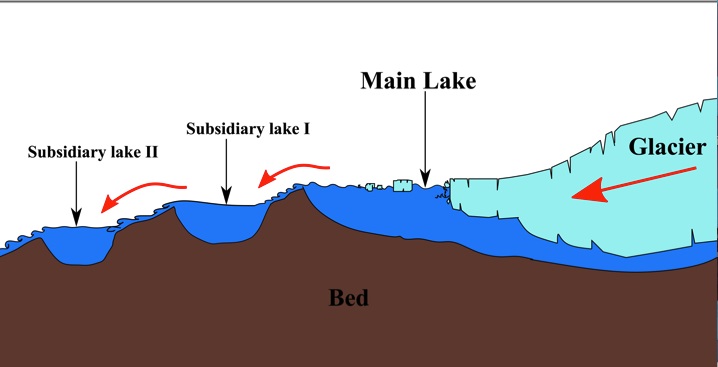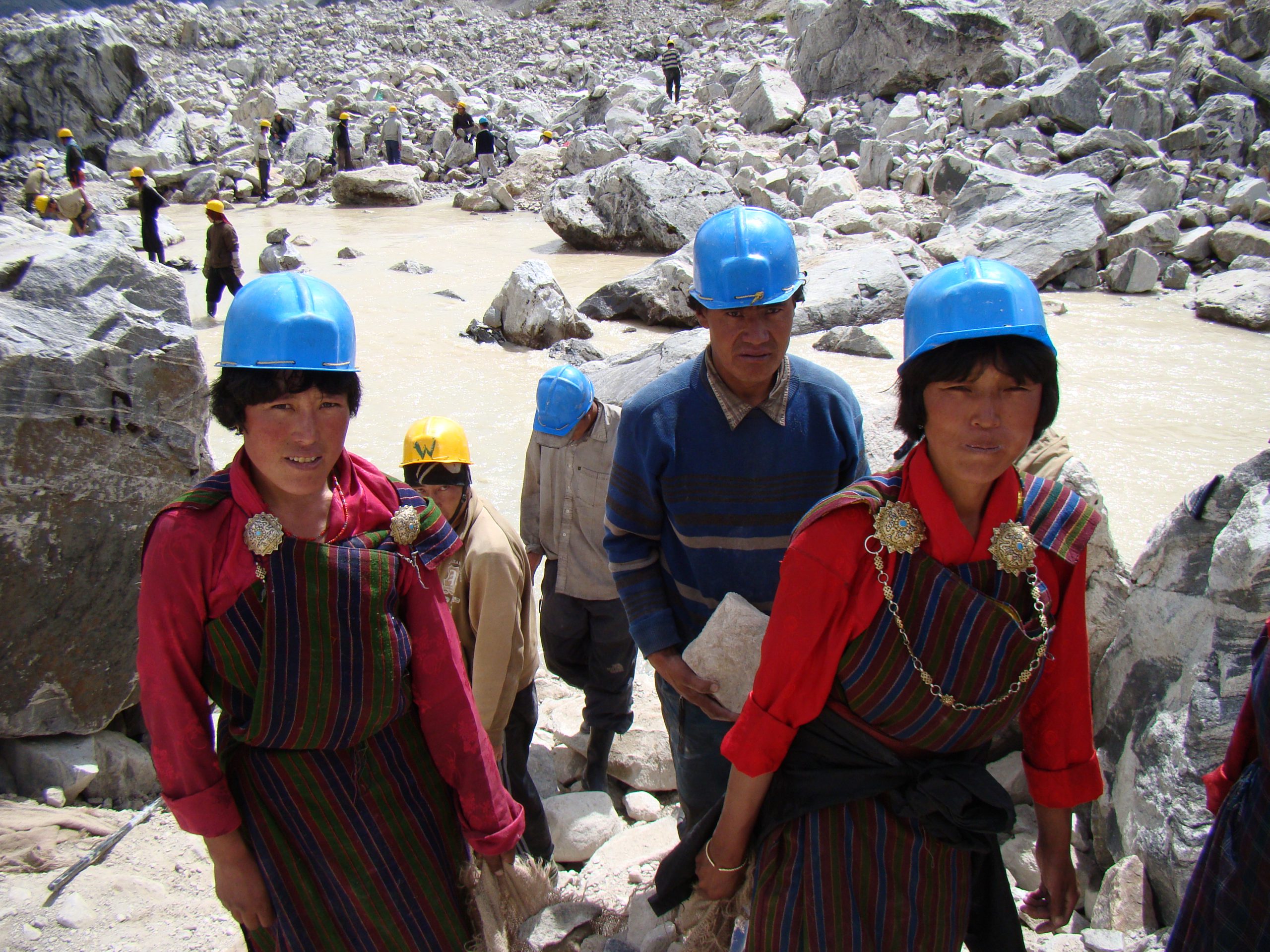Sustained heat waves, a delayed monsoon and a spike in temperature has recently melted huge volumes of ice and snow in Bhutan’s largest glacial lake, the Thorthormi Tsho (lake), causing the water level to rise by almost two meters. This has prompted the government to issue a nationwide flood advisory, warning of the potential risk of a GLOF. A team of senior glaciologists, hydrologists and technicians has visited the site in Lunana to monitor the development.
Any major disturbance on Thorthormi Lake could result in a Glacial Lake Outburst Flood (GLOF), potentially with huge cost to life, property and infrastructure.
Satellite images showed much of the melting on Thorthormi took place between June 6 and 15, as temperatures spiked. On June 20 excess water drained into two smaller lakes located downstream, causing one of them to burst due to its weak moraine entrapment.
![Fresh scouring/landslides can be seen on the moraine dam that separates lakes Thorthormi with Raphstreng [image courtesy: National Centre for Hydrology and Meteorology]](https://dialogue.earth/content/uploads/2019/07/Thorthomi-1.jpg)
Senior glaciologist Karma Toeb, from Bhutan’s National Centre for Hydrology and Meteorology (NCHM) said the excess water was due to the melting of ice in the glacier lake.
In recent years, these glacier lakes have been forming and expanding all over the Hindu Kush Himalayas due to climate change. As the temperature rises and glaciers melt faster, water starts accumulating at their snouts, because the rate of melt becomes faster than the ability of the loose scree and moraine surrounding the snout to drain the water away. The accumulated water forms a lake that keeps getting bigger each year as the problem keeps getting worse. And since these lakes are bounded only by loose pebbles and moraine, the walls are prone to collapse as the weight of water, ice and snow keeps increasing. A GLOF of this kind had caused havoc in India’s Uttarakhand state in 2013.
See Climate change, poor policies, multiply Himalayan flood effects
NCHM officials said the rise in temperature this June was due to a sustained heat wave lasting more than 30 days. The heat wave caused average temperatures in Bhutan to rise by around two degrees Celsius. Temperature sensors that have been installed in Lunana recorded the highest average temperature in the last nine years at nearly 15 degree Celsius for the months of April, May and June.
Toeb explained that when ice melts, water fills up the space between ice and the lake bedrock. This results in less friction. So the ice can move and slide, eventually causing a glacial surge.

A major breach on the moraine dam will combine the two lakes that will release more than 53 million cubic metres of water gushing down the Pho chhu valley. This would be three times bigger than Bhutan’s last major GLOF in 1994 that killed 20 people.

If the two lakes combine and cause a GLOF, it will travel much faster this time because the river channels have already been cleared of debris and other hindrances by the 1994 flood, Tenzin said.
Worst case scenario
One of the worst scenarios for Bhutan is a combination of heavy rainstorm and GLOF happening at the same time. This could also have serious implication across the border in downstream India.
Tenzin explained that, unlike Bhutan, the bordering areas of India were plains. There the floodwater would inundate surrounding land for weeks. This would mean much greater damage.
The director of NCHM, Karma Dupchu, said Bhutan had good communication mechanisms with the Central Water Commission of India and any water and flood related information is shared with India on a sub-hourly basis during the monsoon. This is often not enough, and a system of WhatsApp information sharing between Indian and Bhutanese NGOs and civilians has helped supply timely flood warnings.
See: WhatsApp messages from Bhutan save lives in Assam
In the wake of the current incident, the government is now looking to step up monitoring of temperature in the Thorthormi area by installing more sensors. Over the last few years most of the ice blocks and snow inside Thorthormi have melted and disintegrated.
Threat to development and the economy
The International Centre for Integrated Mountain Development has warned of the potential risk of costly damages from GLOFs on key development sectors like agriculture, hydropower and forests in the Hindu Kush Himalayas.
The GLOF poses a direct threat to the economy, since Bhutan’s core revenue rests on hydropower. Two of the biggest hydropower projects in the country, the 1,200 MW Punatsangchu-I and 1,020 MW Punatsangchu-II, are being built downstream of the Thorthormi Lake. What is more, the new Bhutanese government, has prioritised the construction of the 2,560 MW Sankosh hydropower project on the same river system.
As climate change brings sustained high temperatures to the Hindu Kush Himalayas, infrastructure across the region is increasingly under threat. A GLOF in Pakistan’s Khyber Pakhtunkhwa province has led to a great deal of damage over the last few days. The sister of the Pakistani prime minister was among the dozens of people who had to be rescued from the sudden flood.
Source of water channel for 108mw Golen Gol powerhouse before and after GLOF. pic.twitter.com/ptKm9hHMBW
— Chitral Today (@ChitralToday) July 8, 2019
As heatwaves and rising temperatures become the new normal across the Hindu Kush Himalayas, the countries in the region will have to rethink both disaster preparedness as well as infrastructure development.
With additional inputs from Omair Ahmad








